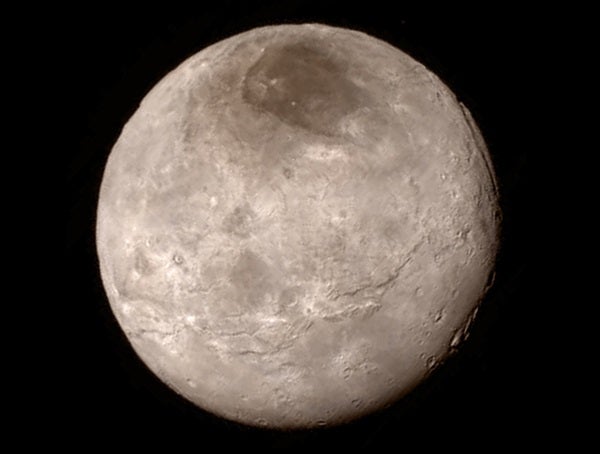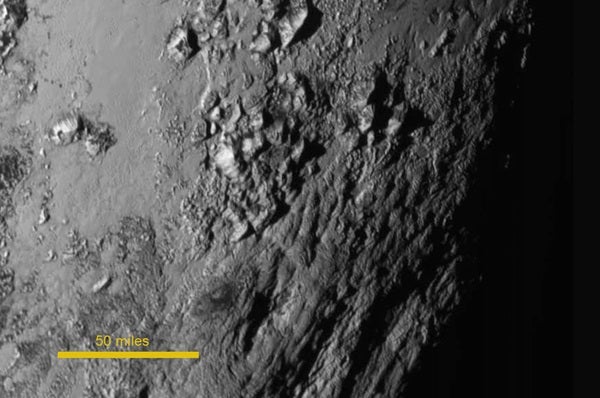The first tantalizing close-up views came down overnight, arriving at Earth around 6 a.m. EDT. Several members of the science team discussed their findings this afternoon at the Johns Hopkins University Applied Physics Lab in Laurel, Maryland, which runs mission operations. The spacecraft remains in excellent health after yesterday’s flyby, with all of the science data apparently on board and ready for downlink over the next 16 months. What the team revealed today were the first high-resolution shots and what borders on instant analysis. As Stern says, “We’re just skimming the top here.”
Deputy Project Scientist Cathy Olkin presented the first high-resolution global view of Charon. It’s a geological paradise, with enough terrain types to keep scientists busy for years. A series of troughs and cliffs stretch 600 miles (1,000 kilometers) across the center of the disk and represent what she says might be some form of internal process at work. A vast canyon some 4 to 6 miles (7 to 9 km) deep scars the moon’s edge at about the 2 o’clock position. And the smooth regions suggest some form of recent activity (few craters mean a surface has not been exposed to bombardment for a long time).
Surprisingly, the image shows no impact craters, implying the region can’t be more than about 100 million years old. Something must be stirring Pluto’s innards, either now or in the recent past. This makes Pluto the only frozen world known that shows activity not driven by heating from tides. What causes it, however, remains a puzzle.
Will Grundy, who leads the mission’s composition team, described some of its preliminary results. One intriguing result: The two ventricles of the “heart” — which the New Horizons team has proposed naming “Tombaugh Regio” after Pluto’s discoverer, Clyde Tombaugh — may not be homogeneous. The so-called left ventricle appears to have a similar composition to the north polar cap, but the right ventricle seems to have a significantly different makeup. Although the two halves may reflect a similar amount of light, they have diverse properties. As Grundy described the bizarre world we see unfolding before our eyes, he said: “I expected this [world] to be complicated and interesting, but I had no idea how complicated and interesting it would be.” Mission scientists certainly have their work cut out to unravel this complex planet. Fortunately, they’ll receive many more observations to help them in their task.











